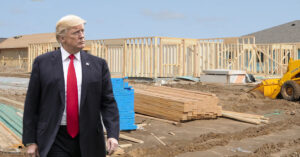The multifamily-housing sector has been a star performer for years among commercial-property types, but market upswings and economic cycles don’t last forever. Interest rates may rise and the Trump administration could potentially reduce the footprint of the government-sponsored enterprises (GSEs) Fannie Mae and Freddie Mac in the multifamily lending space.
Hilary Provinse, executive vice president and head of mortgage banking at Berkadia, spoke with Scotsman Guide about the outlook and challenges for this sector, given these uncertainties.
Are you concerned that rents and occupancy levels will weaken in the multifamily sector?
We don’t have any concerns about the aggregate market fundamentals. We’re still seeing nationwide stability, although there are pockets of uncertainty. Orange County [California] has seen a lot of new completions over the past [few] consecutive years. Seattle is another market that has seen a little bit of a performance dip. Despite some markets experiencing elevated new supply over the last few years, job growth and the long-term demographics for renting are still really strong. We feel that supply will get absorbed over the long term, even if there’s a dip in the short term. We’re also seeing fewer markets with huge rent pops, which isn’t surprising given the long run that we’ve had.
What would higher rates mean for the multifamily market?
It all depends on how high [they rise]. If interest rates start to go up precipitously — which is unlikely over the next couple of years — then [capitalization] rates may adjust and sale prices would be impacted.
All of the commercial mortgages we provide are balloon mortgages, so a rise in interest rates would affect the ability to refinance these loans. The good news from an underwriting standpoint is that when lenders make these loans, we underwrite to an increased interest rate. In a way, we sensitize the loans so that if rates do go up, they can refinance at a higher rate. The market would absolutely have to adjust from a pricing standpoint, but hopefully, the underwriting has been thoughtful and conservative enough that the loans would be able to refinance.
Do you believe the Trump administration will reduce the GSEs’ footprint in multifamily?
I think the administration generally has a “do-no-harm” approach to this business. No one wants to risk disrupting it too much. If the GSEs are privatized and they come out of conservatorship, there will be questions about whether there is more market competition for that government guarantee, as well as what the structure is going to look like. Nobody has really given a clear road map thus far. People expect that they will exist in some form in the future.
There is a thought that [the Trump administration] may want to shrink the multifamily footprint a little bit so that the private market potentially absorbs more of the financing responsibility. Other sources of liquidity would have to pick up the slack, including banks and life insurance companies. It may impact pricing and spreads may widen. That’s something that the market will have to watch. It’s clear that the GSEs’ mandate is really in some of the more mission-focused areas of multifamily and affordability, workforce housing and some of the more challenging areas to finance. If the footprint shrinks, it’s probably not in those areas.
What is the greatest challenge in the multifamily space?
The biggest challenge is affordability and making sure that we have enough affordable apartments. Rents have gone up consistently over the last 10 years of this [real estate] cycle. There are plenty of Americans that can’t afford [the cost of renting]. That there is enough affordable, safe, sustainable housing out there for those people is a challenge we’re all going to have to try and figure out together. There’s no silver bullet.
Author
-

Victor Whitman is a contributing writer for Scotsman Guide and a former editor of the publication’s commercial magazine.
View all posts




